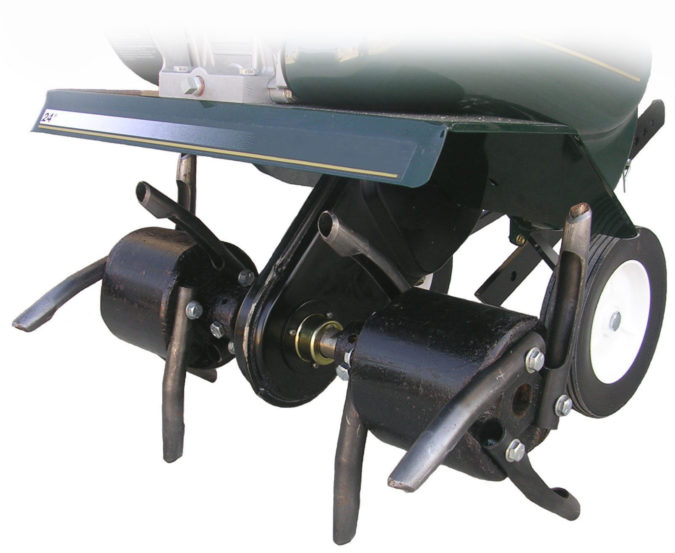
Beautiful, healthy grass makes a great yard for play, right? While this is something many of us would love to have, it’s easy to overlook some of the factors involved in having such a luxury – including the soil below the lawn.
In many ways, the soil underneath your lawn is like the foundation of your house. The key function of the foundation is to provide a stable base, so your house doesn’t shift.
Similarly, the soil beneath your lawn must be healthy and nutrient-rich for your lawn to thrive. The best way to keep the soil beneath your lawn healthy is to aerate your lawn.
Aeration provides important benefits to any lawn
The process of aeration removes small plugs of dirt and help to break up compacted soil, where it can be difficult for plants to grow. There’s less space for roots to spread out in compacted soil. That means those roots can reach less water, nutrients, and even air. Plants can starve and suffocate without access to enough of these vital ingredients.
By creating holes in the soil, aeration allows more room for plants to spread out and access as many resources as possible. Plants in the aerated soil will grow deeper roots as well, which form the base of healthier plants – shallow roots are much more vulnerable to disease and pests.
Ways to determine if your lawn is due to be aerated
First, remember how your lawn was established. Is yours a new construction home? If so, chances are good that the soil below your lawn was compacted during the construction process.
Think about how you use your lawn. Does it get a lot of use by children and pets, or maybe you frequently host parties in your yard? All that walking and running on the grass compacts the soil below. Even leaving heavy items such as toys and gardening tools on the grass can have an impact.
If you don’t have the answer to these questions – you can simply take a look at your lawn to decide if it needs aerating. If your lawn is dry, dying or spongy, it would probably benefit from aeration.
You can perform a simple test by digging out a small sub-section of grass. If root growth there is less than two inches deep, or the thatch layer is greater than one-half inch, the lawn could use aerating.
Do You Have Warm or Cool Season Grass?
Before you aerate your lawn, recall the grasses you planted to determine the best time of year to do it. Most grasses fall into the categories of warm-season or cool-season growth. Warm-season grasses have high growth in the summer, and cool-season grasses have high growth in the fall.
If you have multiple types of grasses in your yard, look up those grasses and their growth season so you can aerate appropriately.
It also helps to know the type of soil beneath your grasses and how much aeration it might require. For example, clay soil becomes compacted more regularly and requires more frequent aeration than sandy soil.
Preparing to Aerate
With proper preparation, your lawn will receive the most benefit from the aeration process.
- Make sure to weed your lawn beforehand, so you don’t end up spreading weeds around while aerating.
- Your lawn should also be moist but not soaked when aerating, as overly wet soil will clog up the aerator machinery. Aerating the day after a light rain will do the job, or you can plan to water lightly the day before aeration to moisten your lawn. Aeration during drought or dry periods is not advised as it will dry out the soil, causing your lawn to lose precious water.
- Finally, plan to mark any underground items – like sprinkler heads or hoses – so you don’t cause any damage in the process.
Pick the Right Tool

Once you have done your research, aerating your lawn is pretty straightforward. You’ll first need to decide what type of aerating tool to use. You can use anything from aerator spikes that strap to your shoes to aerator machinery that you can rent from your local home improvement store.
Regardless of which method you use, experts recommend using an aeration method that actually removes cores of soil. Aerators with tines or spikes that are not hollow can contribute to further soil compaction, as they only poke holes in the ground rather than removing soil to create more space.
When you’ve decided on an aeration tool and prepped your lawn, make one run of your whole lawn and then multiple runs for areas that are more compacted (think high traffic areas).
Maximize Benefits after Aerating with a Few Simple Steps
- Leave the soil plugs on your lawn to decompose. You can either rake them out or run the mower over your lawn to spread the soil plugs out more evenly.
- Fertilize right after aerating to take full advantage of the loose soil (and the ability to get nutrients down to those roots). Adding a thin layer of compost on top of your lawn will achieve the same result.
- Water your lawn after aeration as well to help boost root strength and spread the compost and fertilizer further into the soil.
Aerating your lawn can contribute to its overall health and vitality. Unlike mowing, you don’t have to do it that much! Add this task to your annual or semi-annual lawn care regimen so you can enjoy your lawn over the long haul.
